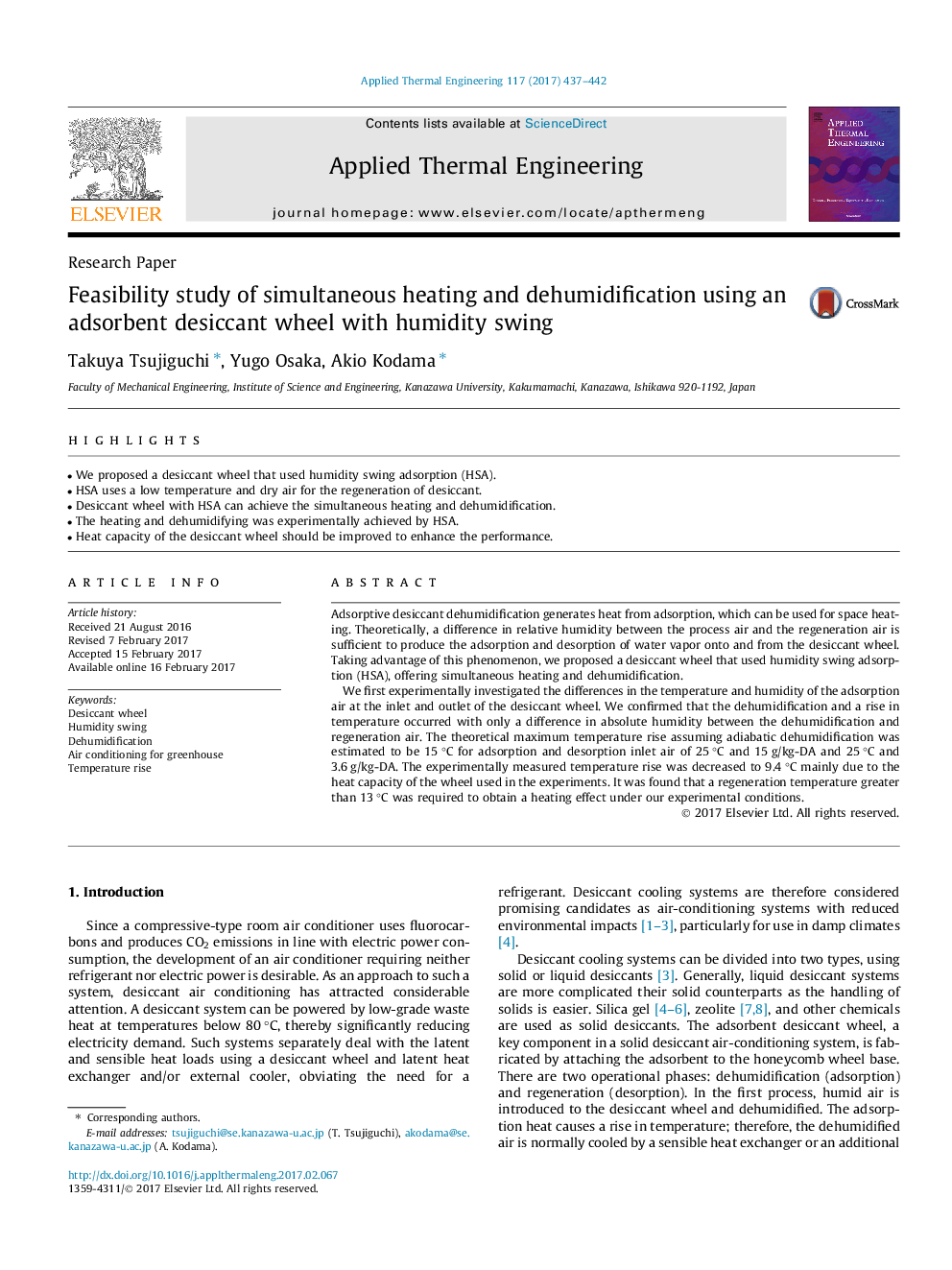| Article ID | Journal | Published Year | Pages | File Type |
|---|---|---|---|---|
| 4991534 | Applied Thermal Engineering | 2017 | 6 Pages |
Abstract
We first experimentally investigated the differences in the temperature and humidity of the adsorption air at the inlet and outlet of the desiccant wheel. We confirmed that the dehumidification and a rise in temperature occurred with only a difference in absolute humidity between the dehumidification and regeneration air. The theoretical maximum temperature rise assuming adiabatic dehumidification was estimated to be 15 °C for adsorption and desorption inlet air of 25 °C and 15 g/kg-DA and 25 °C and 3.6 g/kg-DA. The experimentally measured temperature rise was decreased to 9.4 °C mainly due to the heat capacity of the wheel used in the experiments. It was found that a regeneration temperature greater than 13 °C was required to obtain a heating effect under our experimental conditions.
Related Topics
Physical Sciences and Engineering
Chemical Engineering
Fluid Flow and Transfer Processes
Authors
Takuya Tsujiguchi, Yugo Osaka, Akio Kodama,
